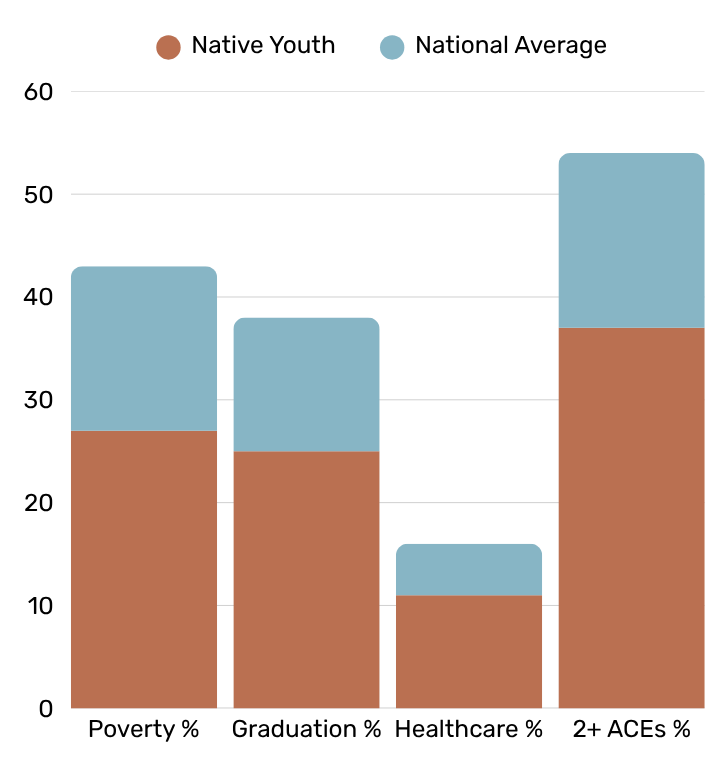
The Urgency of Our Work
Historical injustices continue to affect Native families, particularly through the ongoing high rates of family separation. In Spokane County, limited access to culturally informed legal services often leads to misunderstandings of ICWA and tribal cultures within the court system.
The Sage Indigenous Law Center (SILC) is focused on creating systemic change by challenging the structures that harm Native families and advocating for culturally informed solutions. Through culturally grounded and trauma-informed education for legal professionals, as well as direct services and representation before and during ICWA proceedings, SILC will work to ensure Native families are supported, understood, and kept together whenever possible.
Inequities of Native Youth
27% of Native children live below the federal poverty level
1 in 4 Native high school students do not graduate on time
Native children under age 19 are 2x more likely to be without health insurance
37% of Native children have had at least two ACEs*
Native Americans continue to experience significant economic and educational inequities compared to the general population. These disparities highlight the challenges Native children face and underscore the urgent need to prioritize equity and expand opportunities that strengthen and support Native families.
Children placed in foster care have an increased chance of developing Adverse Childhood Experiences* (ACEs) which increases the likelihood of criminal activity, unstable housing, developing a substance use disorder, and lower education (CDC, 2019).
Group of school girls, many Indigenous, at Fort Spokane.
Taken c. 1903. NPS Collections, LARO 3016
To this day, historical trauma and mistreatment affects Native families and children causing disproportionately negative experiences to their overall health and well-being. “Some of the wounds inflicted by U.S. policies are relatively recent (NICWA 2025).”
Boarding Schools: Programs designed to strip Native children of their Indigenous identity were introduced in 1860. Native children were forcibly separated from their families, often permanently. They were stripped of their Indigenous cultures, tribal ties, and languages and forced to conform to white standards.
Indian Adoption Project: The Indian Adoption Project (IAP), launched by the Bureau of Indian Affairs in 1958, sought to place Native American children with White adoptive families. The IAP intended to assimilate Native children into mainstream culture by removing them from their tribal communities.
Legislative Intent of ICWA: Congress found that states often failed to recognize tribal interests, which could result in child trauma. It was in 1978 that Congress was compelled to pass the Indian Child Welfare Act (ICWA) (Congress.gov).
ICWA provides Native children with a higher standard of protection from separation from their homes and preferred placement within the child’s tribal community.


